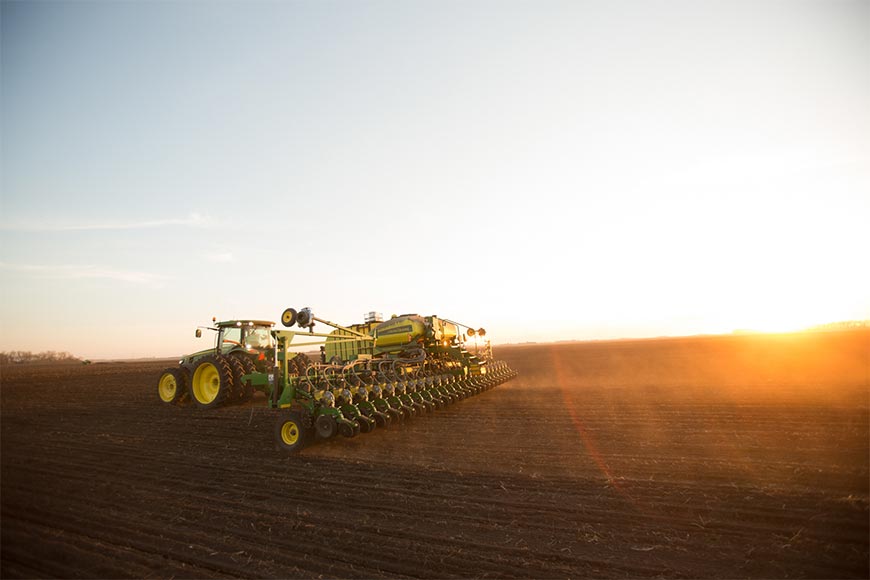Northern States Win the Planting Race

Mother Nature blessed much of northern Illinois, Iowa, Minnesota, South Dakota and Wisconsin with favorable planting conditions this season, helping many farmers complete corn and soybean planting on or before average planting dates.
Meanwhile, some farmers in southern Illinois, Indiana, Michigan and Ohio and are still racing to complete planting due to cool, wet weather, which delayed planting progress. Spotty frosts throughout most of the Midwest have caused concern for early crop damage, but no widespread replanting has been reported.
The Triple Threat – Diseases, Pests and Weeds
In states with fluctuating temperatures and consistent wet conditions, farmers should be scouting for seedling diseases in corn and soybeans, especially in areas that experienced extended cool, wet soils and delayed emergence. Reports have already surfaced in Indiana about some cornfield replants due to disease-induced stand reduction. In Iowa, farmers are advised to scout cornfields for diseases such as anthracnose during V4 and V5.
Wet weather has also been conducive to insect development, including slugs, which have been reported in some Ohio fields. In Wisconsin, black cutworm larvae have recently been spotted and can be treated with an insecticide tank mixed with herbicide applications.
Weeds continue to be top of mind for all farmers, but especially in fields that did not receive a burndown or preemergence herbicide application. Farmers are encouraged to scout fields regularly and treat weeds when they are between 2 and 4 inches tall for easier control.
Meanwhile, some farmers in southern Illinois, Indiana, Michigan and Ohio and are still racing to complete planting due to cool, wet weather, which delayed planting progress. Spotty frosts throughout most of the Midwest have caused concern for early crop damage, but no widespread replanting has been reported.
The Triple Threat – Diseases, Pests and Weeds
In states with fluctuating temperatures and consistent wet conditions, farmers should be scouting for seedling diseases in corn and soybeans, especially in areas that experienced extended cool, wet soils and delayed emergence. Reports have already surfaced in Indiana about some cornfield replants due to disease-induced stand reduction. In Iowa, farmers are advised to scout cornfields for diseases such as anthracnose during V4 and V5.
Wet weather has also been conducive to insect development, including slugs, which have been reported in some Ohio fields. In Wisconsin, black cutworm larvae have recently been spotted and can be treated with an insecticide tank mixed with herbicide applications.
Weeds continue to be top of mind for all farmers, but especially in fields that did not receive a burndown or preemergence herbicide application. Farmers are encouraged to scout fields regularly and treat weeds when they are between 2 and 4 inches tall for easier control.

